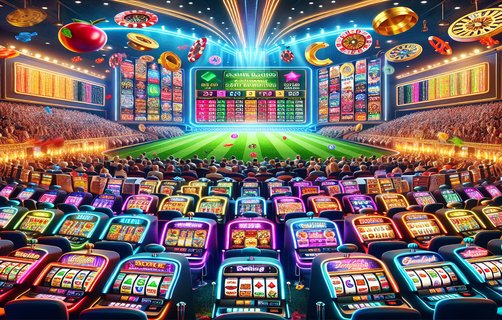Exploring the Future of Lottery: A Designer's Thinking Approach
The modern gaming landscape is constantly evolving, and the mega lottery experience is no exception. As we dive into an in-depth analysis using designer's thinking, we will explore various aspects of this world, encompassing everything from scratch cards to cryptocurrency gambling. Along the way, we will touch on regulatory frameworks, game performance tracking, and the burgeoning relationship between gambling and virtual reality, all with a user experience perspective.
Scratch Cards: A Gateway to Instant Wins
Scratch cards have been a staple of the lottery experience for decades, delivering an instant-win thrill. They appeal deeply to the user's desire for immediate gratification. From a design perspective, the tactile experience of physically scratching off a card adds a unique element of enjoyment. However, in our analysis, it's important to look beyond just the physical aspects. How can we enhance the digital scratch card experience to match this tactile delight?
Incorporating augmented reality (AR) elements could bridge the gap between digital and physical. For example, imagine pointing your device at a virtual scratch card and watching animated graphics come to life as you reveal hidden prizes. This innovative approach could rejuvenate interest in scratch cards and attract a new generation of players.
The Role of Regulatory Bodies: Alderney Gambling Control Commission
Regulatory bodies like the Alderney Gambling Control Commission play a critical role in maintaining the integrity of lottery games. Their stringent licensing process ensures that players can engage in a safe and fair environment, which is paramount for fostering trust. For designers, this underscores the importance of transparency in game design. Integrating features that educate players about odds, payout structures, and how funds are allocated can build a more educated and engaged user base.
Friends and Family Bonuses: Gamifying the Social Aspect
The social aspect of lottery games is often overlooked. By introducing friends and family bonuses, lotteries can leverage social networks to enhance player engagement. Imagine a system where players can invite friends to join them in a draw and receive bonuses based on collective ticket purchases. This not only incentivizes group play but also enhances the overall experience, making it more communal and enjoyable.
Timing Bets: The Psychology of Play

Timing is essential in lottery betting. Analyzing user behavior can reveal peak times when players are most likely to participate. Designers can utilize this data to optimize in-game notifications and promotional offers that coincide with these peak engagement periods. For example, if data shows that players tend to make bets in the evening, sending targeted bonuses or reminders during that time can effectively boost ticket sales and player satisfaction.
Game Performance Tracking: Data-Driven Design
In the realm of lottery games, continuous performance tracking is vital. Designers can implement analytics tools that monitor player engagement, game popularity, and win-frequency patterns. This data not only aids in refining existing games but also serves as a foundation for developing new ones. By understanding which games lead to longer play sessions and higher returns, lotteries can tailor their offerings to meet players' desires, ensuring a dynamic and appealing gaming environment.
Gambling and Virtual Reality: A New Frontier
As technology advances, the intersection of gambling and virtual reality (VR) becomes increasingly relevant. VR has the potential to create immersive lottery experiences that transport players into a 3D lottery hall, complete with live draws and interactive elements. This not only enhances the excitement but also provides a new platform for community engagement among players. Designers must consider how to create these environments to foster interaction and maintain player interest, incorporating gamification elements that make the lottery feel less transactional and more like an experience.
Cryptocurrency Gambling: Embracing the Future

Finally, the rise of cryptocurrency is reshaping the landscape of online gambling, including lotteries. With its promise of anonymity, enhanced security, and reduced transaction times, cryptocurrencies appeal to a tech-savvy audience. Designers should explore ways to integrate cryptocurrency options seamlessly into the lottery experience. This includes ensuring that wallets are easy to set up and use, promoting responsible gambling practices, and providing clear information about the unique risks and benefits associated with this form of payment.
In conclusion, the future of mega lotteries is being shaped by innovative design thinking that emphasizes user experience. As we continue to explore exciting developments in technology and user engagement strategies, we have an opportunity to redefine how players interact with lottery games, creating a more immersive, enjoyable, and responsible gaming environment.
